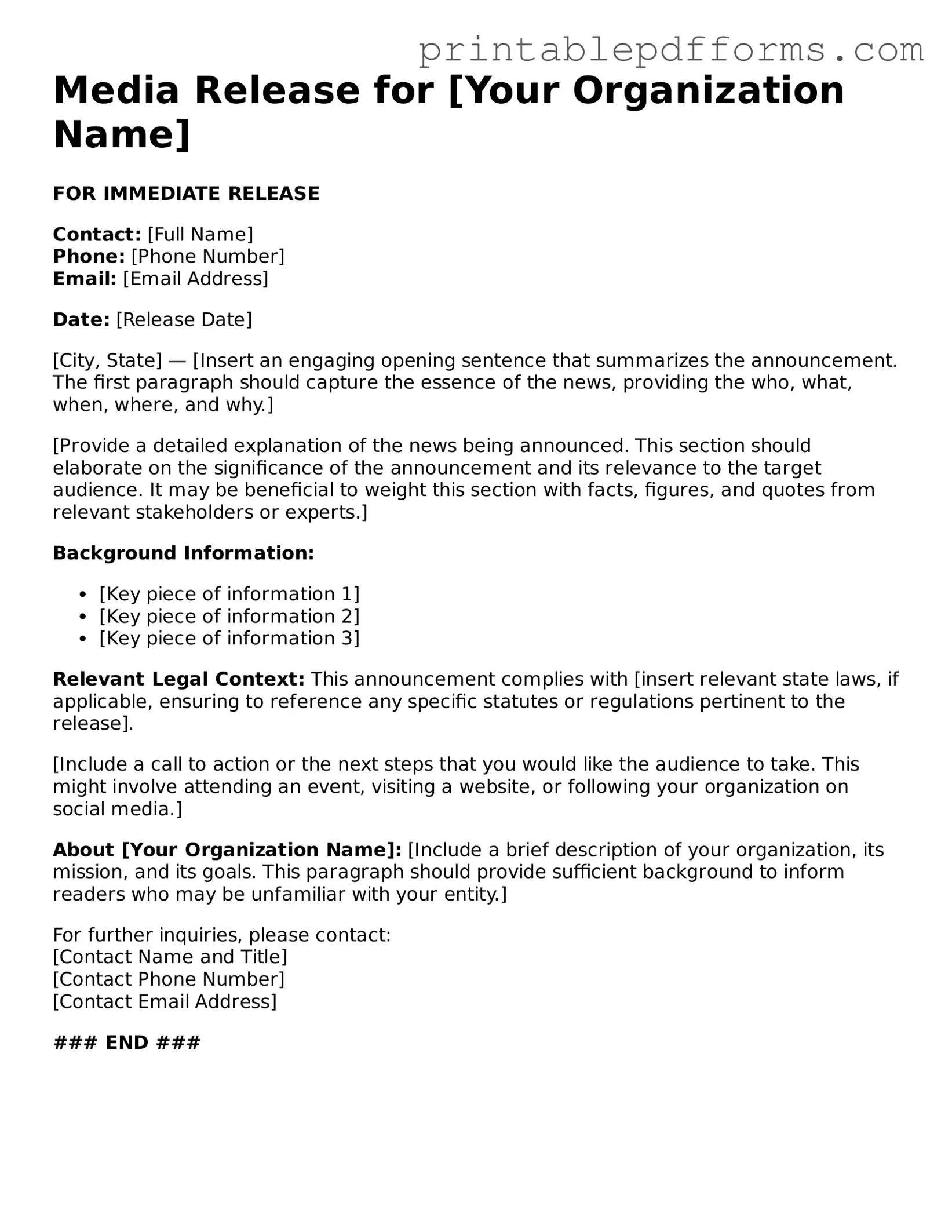Media Release for [Your Organization Name]
FOR IMMEDIATE RELEASE
Contact: [Full Name]
Phone: [Phone Number]
Email: [Email Address]
Date: [Release Date]
[City, State] — [Insert an engaging opening sentence that summarizes the announcement. The first paragraph should capture the essence of the news, providing the who, what, when, where, and why.]
[Provide a detailed explanation of the news being announced. This section should elaborate on the significance of the announcement and its relevance to the target audience. It may be beneficial to weight this section with facts, figures, and quotes from relevant stakeholders or experts.]
Background Information:
- [Key piece of information 1]
- [Key piece of information 2]
- [Key piece of information 3]
Relevant Legal Context: This announcement complies with [insert relevant state laws, if applicable, ensuring to reference any specific statutes or regulations pertinent to the release].
[Include a call to action or the next steps that you would like the audience to take. This might involve attending an event, visiting a website, or following your organization on social media.]
About [Your Organization Name]: [Include a brief description of your organization, its mission, and its goals. This paragraph should provide sufficient background to inform readers who may be unfamiliar with your entity.]
For further inquiries, please contact:
[Contact Name and Title]
[Contact Phone Number]
[Contact Email Address]
### END ###
